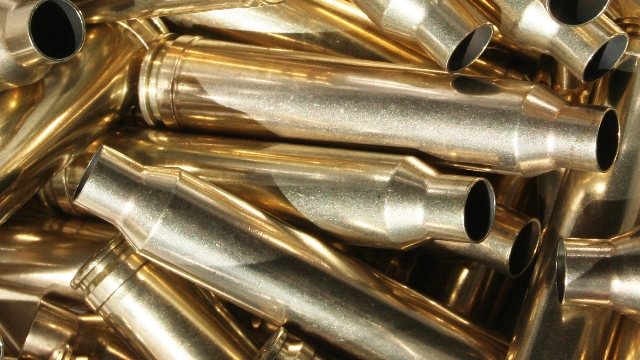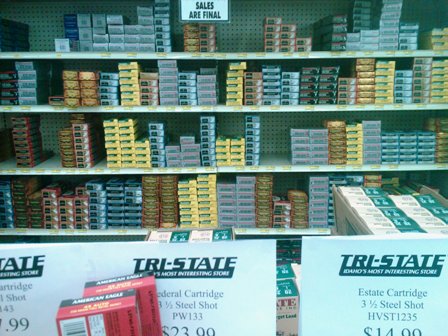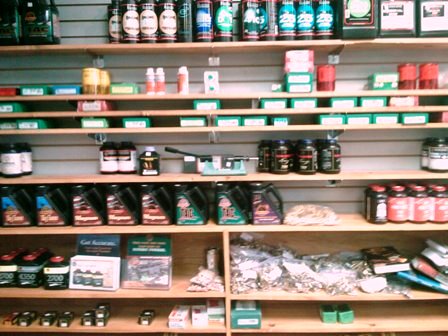Barb and I just finished watching the TV series The Unit. We really enjoyed it.
The gun handling and shooting was way above average. They shot around corners correctly, they cleared rooms correctly, they got hits at ranges in times that could be expected from expert shooters.
Barb loves to predict the outcome of any movie or show she watches. Who is going to be the bad guy? How are they going to get out of this predicament?
She is very good at it. So good that our kids tell her to shut up just as soon as her mouth starts to open. I don’t mind and frequently play the game as well. Barb was frequently stumped. The writers were very good and we enjoyed the show being unpredictable without “angels flying out of their ass” to save the day. The solutions to the problems the characters faced were nearly always innovative and believable.
It was also very cool that the operatives/shooters wives were a big part of the stories they told. I was afraid that Barb wouldn’t care for the show and I would end up watching it alone but the inclusion of the wives side of the drama made a big difference and did not detract from my enjoyment of the show.
There were occasionally things that bugged me about it however. Ironically the biggest was the item that got me to start watching it to begin with.
I had lunch with a friend a few months ago and he asked if it was true that putting mercury in a bullet would cause it to completely disintegrate upon impact because he had seen in on the show. I told him I would have to watch the show to be certain but it probably was just reusing an old plot device.
As near as I can tell the mercury bullet thing first came from the novel The Day of the Jackal (1971) by Frederick Forsyth. I read the book shortly after it came out and was fascinated, as many people are, by the mercury filled bullets. It’s a great plot device but as near as I can determine pointless.
First off it’s going to be really tough to make the bullet accurate with a liquid moving around inside the bullet. Second, we already have rifle bullets that can, essentially, explode upon impact. Why do you think Speer calls their varmint bullets TNT?
The TNT bullets are only rated at 3100 fps because, according to the manual, they are likely to “explode” before reaching the target if you push them faster than that. I bought some .30 caliber 125 grain TNT “seconds” (the factory is in nearby Lewiston Idaho and they sometimes sell cosmetically defective bullets in bulk to the local gun shops) for breaking in the barrel of my .300 Win Mag. Yeah, isn’t that a real kick? Using a 125 grain varmint bullets in .300 Win Mag.
The 3100 fps limit specified didn’t really make sense to me. I would have expected a rotational rate limit rather than a velocity rate and I sent a customer service guy I knew at Speer an email. He confirmed what I suspected. It really was a rotational issue. 3100 fps assumed the normal 1:10 twist barrels. But I have a 1:11 twist. Which means I could push them faster. Furthermore he told me that it also assumed a normal hunting type barrel where the rifling was fairly sharp and engraved, and weakened, the bullet jacket considerably. Many match grade barrels resulted in a less compromised jacket and hence you could push the bullets even faster without having them go “poof” on the way to the target. My calculations indicated I should be able to get at least 3400 fps out of them. Cool! Imagine what those bullets are going to do with they hit something.
I decided to use the bullets for something more than breaking in the barrel. I coated my bullets with moly to further reduce the engraving of the jacket by the rifling and began working up a load.
According to my references the min and max loads of Varget for 125 grain bullets in .300 Win Mag are 65 and 70 grains. I worked my way up to the max loads without any signs of excessive pressure. On the range the chronograph told me I was getting a mean muzzle velocity of 3497 fps using the max load. Occasionally one of the bullets won’t make it to the target but that’s a bit rare. Tests on milk jugs filled with water with a tarp underneath and around them to aid in collecting the pieces confirmed that the bullet essentially disappeared into a collection of lead sand upon impact and the jug behind it would only get a small “puncture wound” from the base of the jacket. The main part of the jacket was torn to shreds and no piece, other than the jacket base, was larger than about 0.1 inches in any dimension.
I use factory loaded 50 grain VMAX bullets in my AR-15 from Black Hills with similar results.
Mercury filled bullets? Why? Because it’s a cool plot device.





